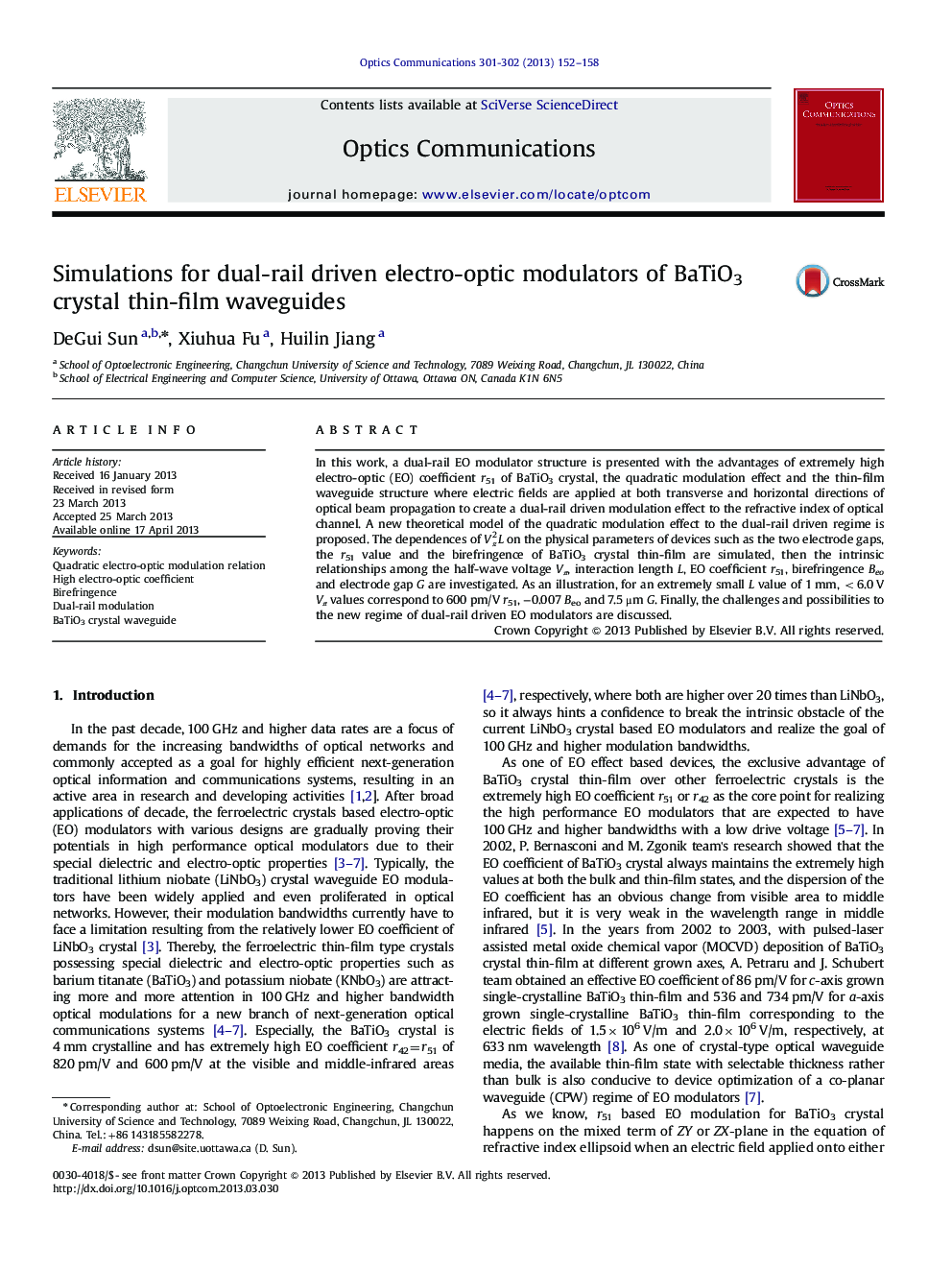| Article ID | Journal | Published Year | Pages | File Type |
|---|---|---|---|---|
| 1535237 | Optics Communications | 2013 | 7 Pages |
Abstract
In this work, a dual-rail EO modulator structure is presented with the advantages of extremely high electro-optic (EO) coefficient r51 of BaTiO3 crystal, the quadratic modulation effect and the thin-film waveguide structure where electric fields are applied at both transverse and horizontal directions of optical beam propagation to create a dual-rail driven modulation effect to the refractive index of optical channel. A new theoretical model of the quadratic modulation effect to the dual-rail driven regime is proposed. The dependences of VÏ2L on the physical parameters of devices such as the two electrode gaps, the r51 value and the birefringence of BaTiO3 crystal thin-film are simulated, then the intrinsic relationships among the half-wave voltage VÏ, interaction length L, EO coefficient r51, birefringence Beo and electrode gap G are investigated. As an illustration, for an extremely small L value of 1 mm, <6.0 V VÏ values correspond to 600 pm/V r51, â0.007 Beo and 7.5 μm G. Finally, the challenges and possibilities to the new regime of dual-rail driven EO modulators are discussed.
Keywords
Related Topics
Physical Sciences and Engineering
Materials Science
Electronic, Optical and Magnetic Materials
Authors
DeGui Sun, Xiuhua Fu, Huilin Jiang,
